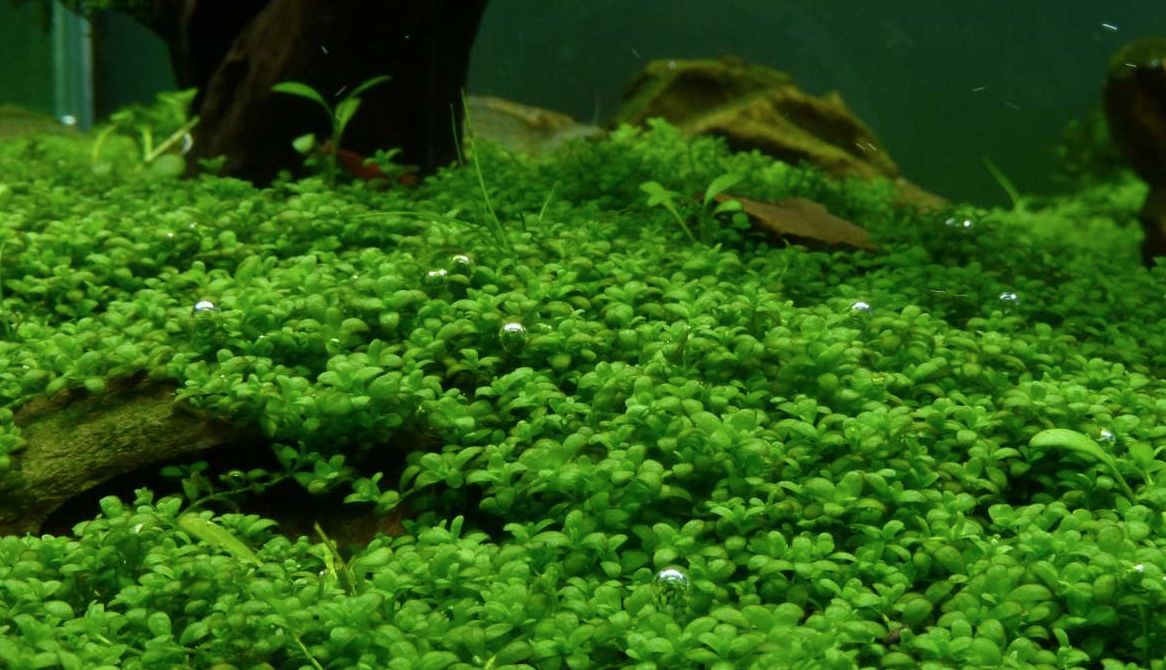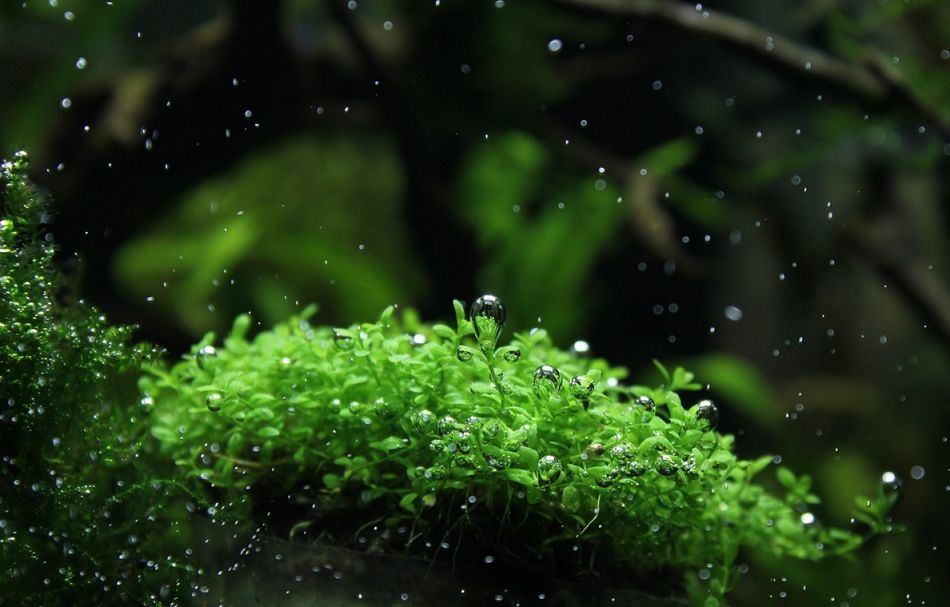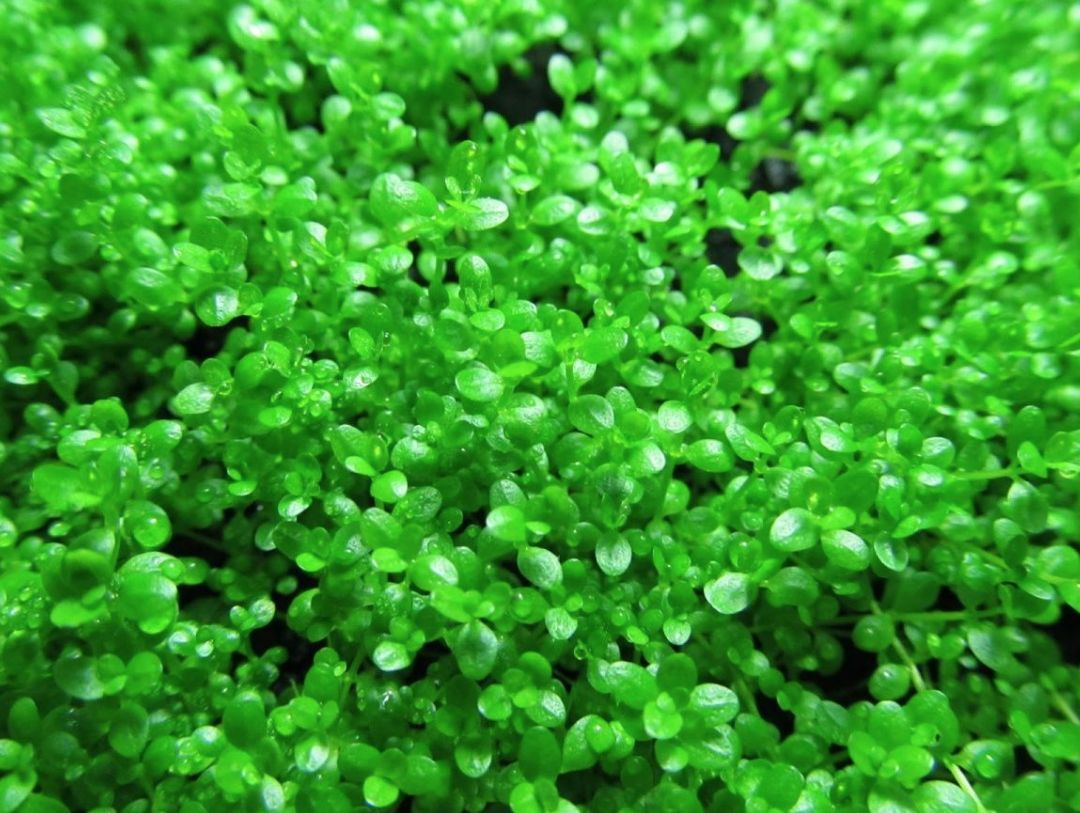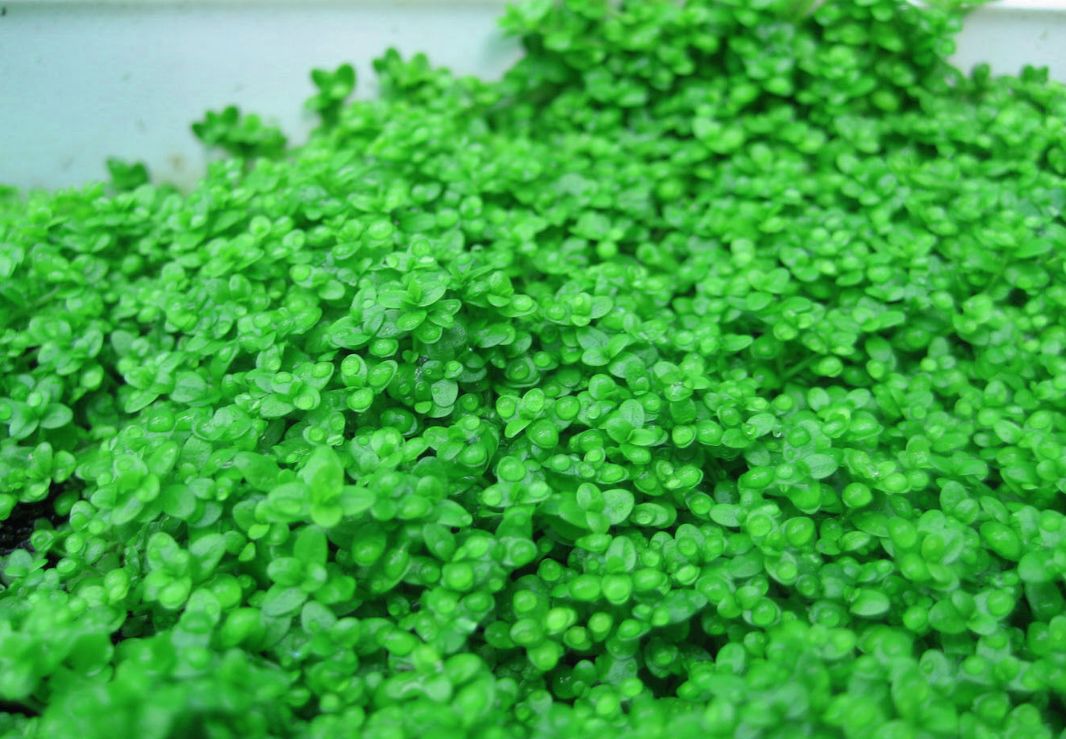Hemianthus callitrichoides, commonly known as dwarf baby tears or HC cuba, is a sought-after aquarium plant known for its beauty and challenging care requirements. This ground-covering species is one of the smallest aquatic plants, making it ideal for the front of nano tanks. Often featured in Iwagumi-style aquascapes, which emphasize harmonious stone arrangements, dwarf baby tears creates a stunning carpet effect on the tank bottom. However, its demanding nature requires precise lighting, CO2 injection, and nutrient management, making it essential for aquarists to provide optimal conditions for growth and health.

Contents
Plant Habitat in the wild
Hemianthus callitrichoides, commonly known as dwarf baby tears or HC cuba, is a highly sought-after aquarium plant celebrated for its beauty and demanding care. Discovered by Holger Windelov, founder of Tropica, during the dry season near Las Pozas, Cuba, this plant thrives at water levels around 50 cm and grows among large stones.
It forms dense green patches that can withstand strong water flow, particularly during rainy seasons when it becomes submerged up to 1 meter deep. Although recent studies confirm its native habitat is exclusively in Cuba, it has also been found in North America. Since its introduction to the aquarium hobby in 2003, HC cuba has quickly gained popularity among professional aquarists for creating naturalistic aquascapes, requiring optimal lighting, CO2, and nutrients for successful growth.
Description
Visually, HC cuba is a miniature version of Hemianthus micranthemoides, characterized by its small, round leaves that resemble tiny tears or droplets. Typically reaching a maximum height of about 1 inch (2.5 cm), HC cuba has smaller leaves and shorter stems compared to its counterpart. The bright green leaves possess a delicate texture, contributing to the plant’s aesthetic appeal.
| Aspect | Hemianthus Callitrichoides (Dwarf Baby Tears) |
|---|---|
| Common Name(s) | Dwarf Baby Tears; hc cuba; cuba plant; cuba carpet plant |
| Family | Scrophulariaceae |
| Native Region | Cuba |
| Growth Difficulty | High |
| Light Requirements | High (intense lighting) |
| CO2 Requirements | High (CO2 injection recommended) |
| Water Parameters | Soft to moderately hard, slightly acidic pH |
| Temperature Range | 68°F to 82°F (20°C to 28°C) |
| Maximum Height | 1 inch (2.5 cm) |
| Growth Rate | Moderate |
| Propagation | Runners, division, tissue culture |
| Ideal Placement | Foreground or carpeting plant |
| Suitable for Aquascaping | Yes |
| Tank Size Recommendations | Nano tanks to larger aquariums |
| Compatibility | Compatible with most fish and invertebrates |
| Maintenance Level | Moderate to high (trimming and pruning needed) |
| Special Considerations | Requires proper light, CO2, and nutrient dosing |

Difficulties in keeping
Hemianthus callitrichoides, is a challenging plant to maintain, making it less suitable for beginner aquarists (It’s better for them to choose simpler plants, like Vallisneria). It has specific demands regarding mineral composition, requiring a small-grained substrate, strong illumination, and a supply of artificial CO2 to thrive effectively.
When planting HC cuba, it’s advisable to space the plants several centimeters apart to allow for optimal growth. Successful cultivation hinges on strong lighting, adequate CO2, and regular fertilization. Additionally, fast-growing plants nearby can overshadow dwarf baby tears over time, potentially pushing them out. To prevent this, it’s essential to regularly thin and trim neighboring plants, ensuring that HC cuba continues to flourish.


Keeping and care in a tank
Hemianthus callitrichoides, or dwarf baby tears, is a delicate and demanding plant that forms a dense, low-lying carpet, with its tiny, round leaves tightly knit together. This results in a visually stunning and vibrant foreground, resembling a verdant meadow beneath the water’s surface. Achieving a successful carpet requires careful planting, ensuring that the stems have ample contact with the substrate.
With optimal conditions—including high-intensity lighting, sufficient CO2 supplementation, and a nutrient-rich substrate—the dwarf baby tears carpet flourishes, creating a breathtaking centerpiece in any aquascape. Its lush appearance not only enhances the beauty of the aquarium but also contributes to a balanced ecosystem, attracting various aquatic life.
Lighting
Hemianthus callitrichoides is known for its high light requirements. Adequate lighting is crucial for promoting healthy growth and vibrant coloration. While HC cuba can tolerate lower light conditions, it will grow elongated and lose its compact form. Conversely, if the light is very weak, the plant may stop growing altogether. The stronger the lighting, the thicker and denser the carpet becomes, as the stems grow tightly together.
For optimal growth, it is recommended to use light fixtures that emit a spectrum in the range of 6,500 to 10,000 Kelvin (K), closely mimicking natural daylight. A photoperiod of 8 to 10 hours per day is ideal, and consistency in the lighting schedule helps maintain a stable environment. Additionally, consider the depth of the aquarium; deeper tanks may require more powerful fixtures or positioning plants closer to the light source to ensure adequate penetration.
Nutrients
Like other aquatic plants, Hemianthus callitrichoides requires macronutrients such as nitrogen (N), phosphorus (P), and potassium (K) for various metabolic processes, including photosynthesis and cell growth. These nutrients can be supplied through liquid fertilizers or substrate additives designed for aquarium plants.
This plant is particularly demanding regarding iron content. If the iron level is low, the leaves can become pale and small. Thus, it is essential to use iron-containing liquid fertilizers in precise doses. After adding these fertilizers, the plant can quickly restore its vibrant color, making it a useful indicator of iron levels in the tank. Under optimal conditions, HC cuba can grow rapidly, requiring fertilization within 3-4 weeks of planting. Regular dosing, based on the plant’s needs, helps ensure a steady supply of nutrients, so following the manufacturer’s instructions is crucial to avoid overdosing or underdosing.
CO2
Dwarf baby tears benefit significantly from elevated levels of carbon dioxide (CO2) in the aquarium. CO2 supplementation enhances photosynthesis, leading to faster growth, improved coloration, and increased vitality. While HC cuba can survive without CO2, providing it can dramatically accelerate growth rates.
The recommended CO2 concentration for Hemianthus callitrichoides is between 20 to 30 parts per million (ppm). Monitoring CO2 levels with a drop checker or CO2 monitoring device is essential to prevent overdosing or deficiencies, both of which can adversely affect plant health. Increased CO2 levels, coupled with high lighting, enhance growth rates, necessitating regular trimming.
Water Parameters
The optimal temperature for dwarf baby tears is around 25°C, but the plant can tolerate a range of 20 to 28°C. It prefers slightly acidic to neutral pH levels, with an ideal range of 6.0 to 7.0. Maintaining stable pH levels within this range is crucial for healthy growth.
HC cuba can tolerate various water hardness levels, though it generally thrives in soft to moderately hard water, with a recommended KH range of 3 to 6 degrees.
Substrate
Using a nutrient-rich substrate or specialized aquatic soil significantly benefits the growth of Hemianthus callitrichoides, providing essential nutrients to the plant’s root system. Given its relatively weak root system, avoid siphoning the substrate around it. Additionally, ensure the carpet does not grow higher than 2 cm, as excessive height can lead to detachment from the substrate.
Water Flow
Dwarf baby tears thrive in moderately strong water flow and filtration, alongside regular water renewals. Stagnant water can slow the plant’s growth, and inadequate filtration may result in algae growth, diminishing the plant’s attractiveness. Adequate circulation helps distribute nutrients and CO2 evenly, promoting healthy growth and preventing stagnation.



How to plant dwarf baby tears
The most crucial and challenging aspect for an aquarist is the process of planting Hemianthus callitrichoides. As previously mentioned, successful growth requires a small-grained substrate and the absence of bottom-digging fish in the tank.
There are two primary methods for planting Hemianthus callitrichoides:
Method 1: Bunch Planting
In the first method, small bunches of the plant (no more than 1 cm in diameter) are placed into cavities in the substrate and buried so that only a few stems remain above the surface. Over time, the plant will break through the substrate and begin to grow actively.
Method 2: Branch Planting
The second method involves planting separate branches (about 2-3 stems each). This approach is useful when there isn’t enough planting material available. Long, thin pincers are recommended for this method. The branches are completely buried in the substrate, leaving only the tops exposed.
In both methods, the lower part of the stem with leaves serves as an anchor, holding the plant in place until it establishes its roots. To create a solid carpet, the distance between individual plants should not exceed 1 cm.